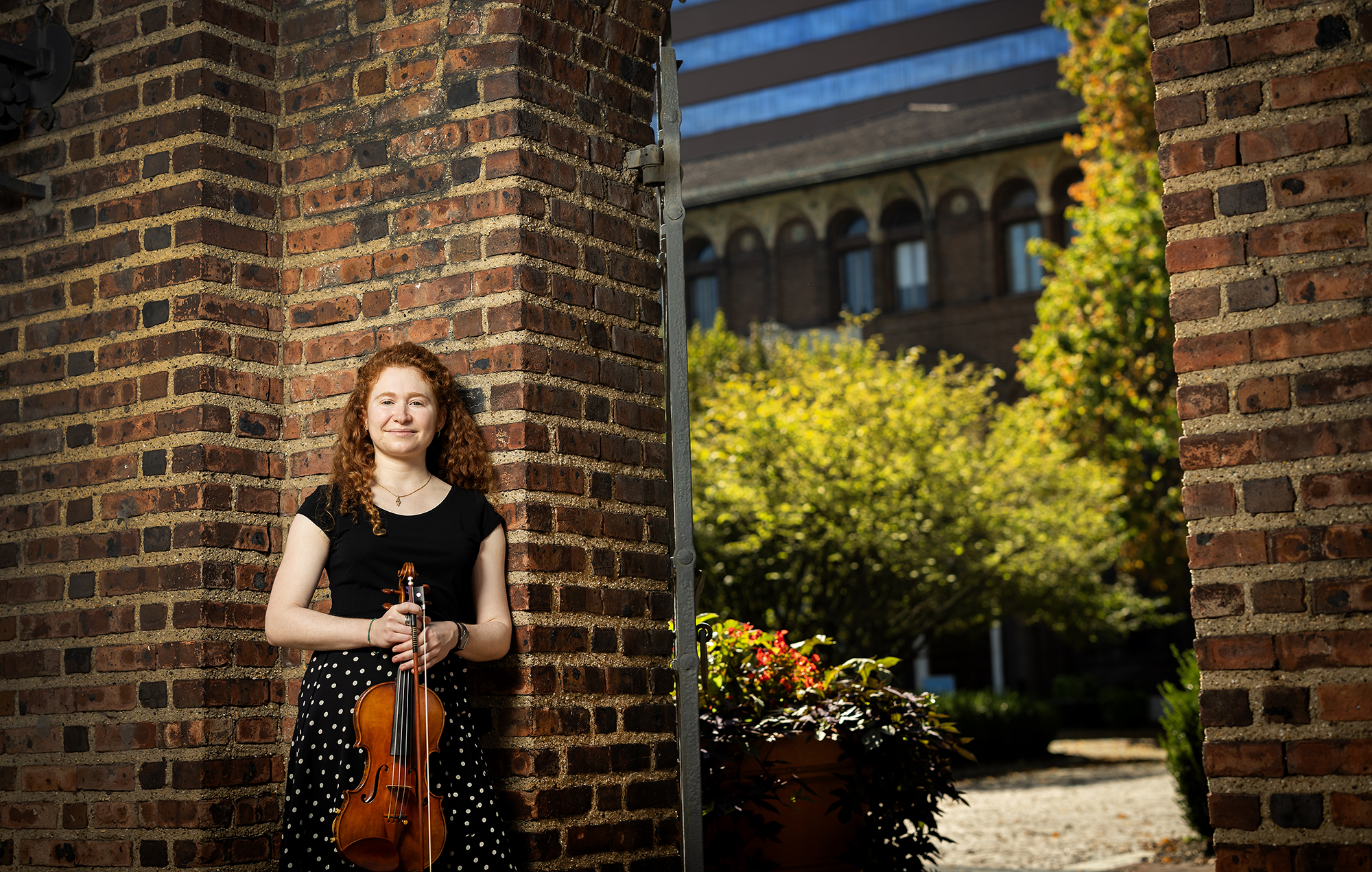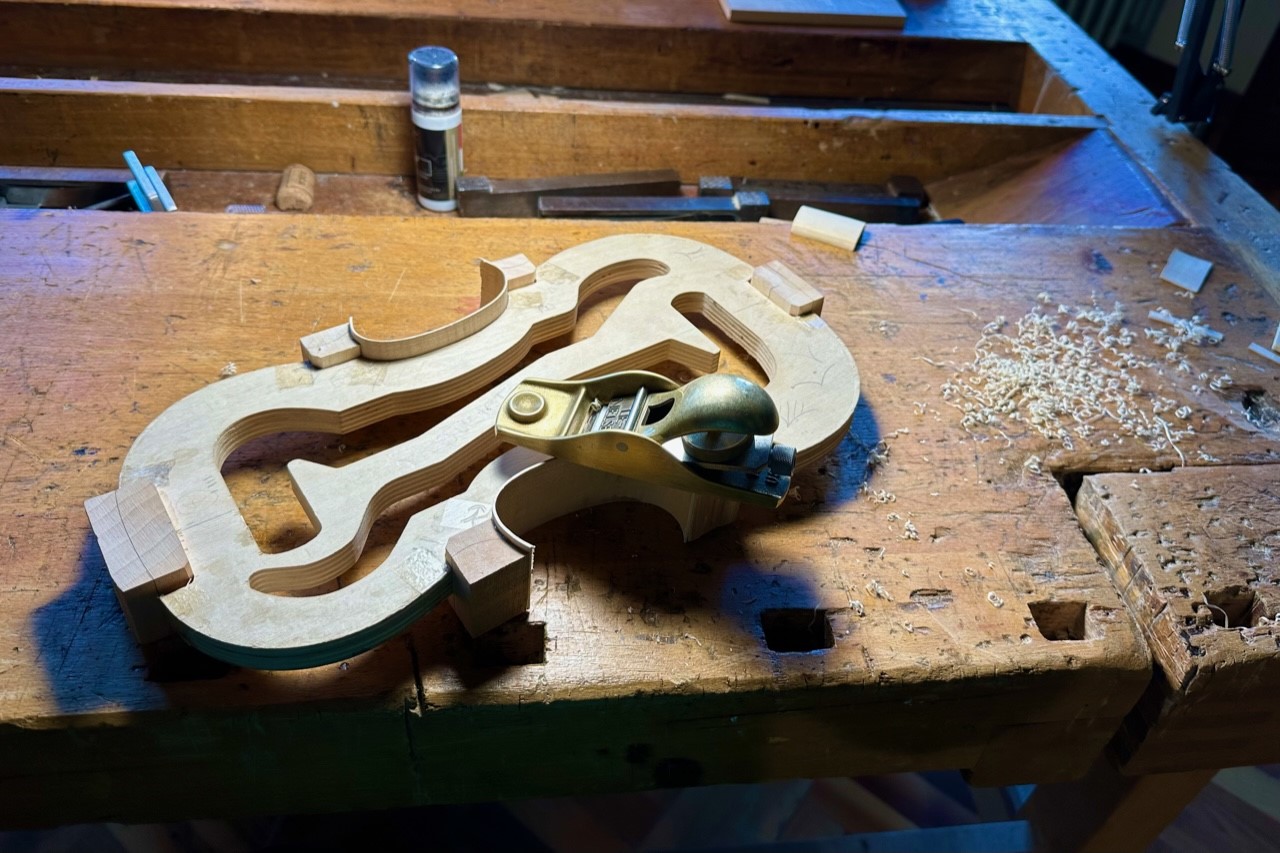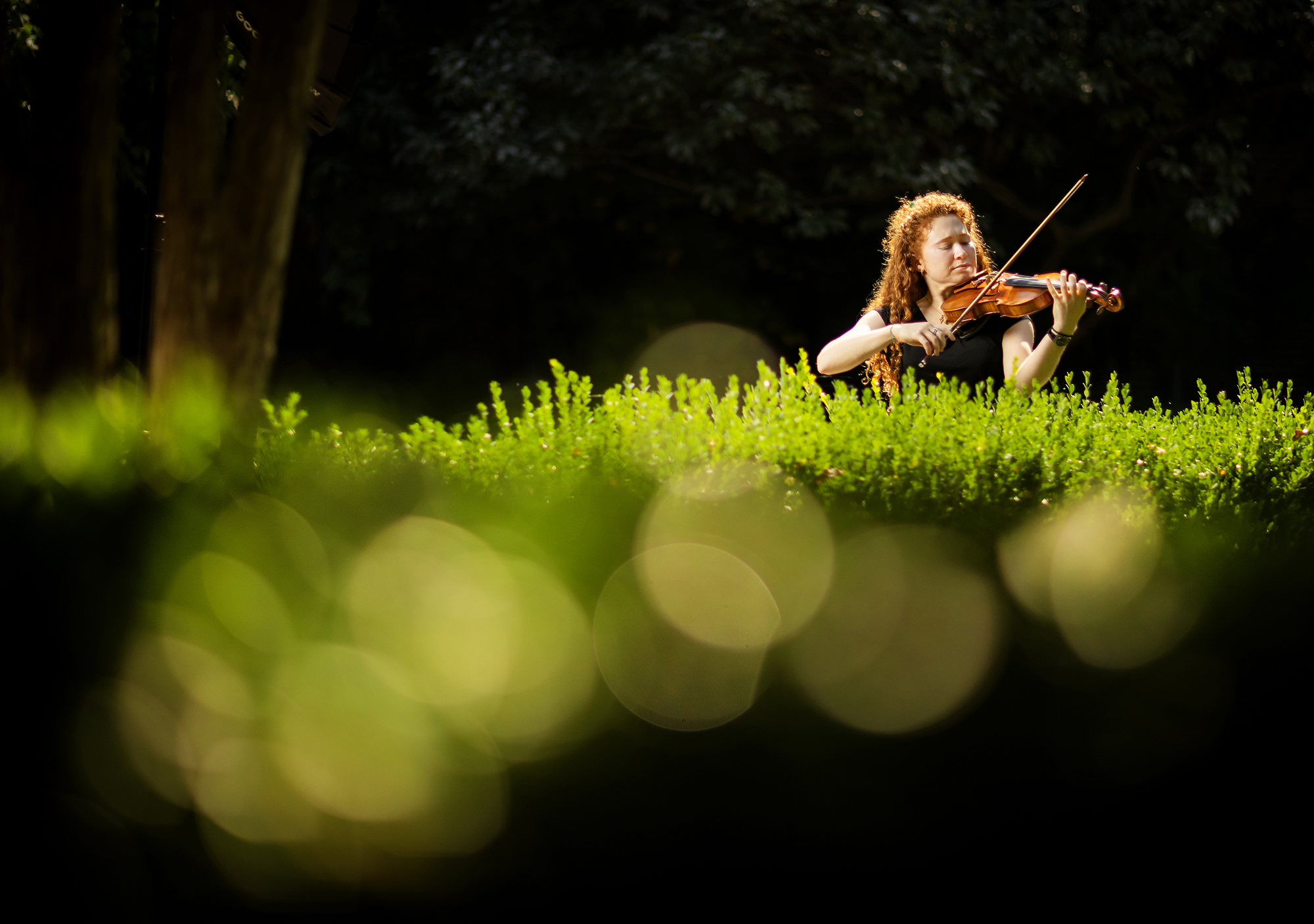
- Who
Juliet Glazer grew up in New York City and was 6 when she started playing the violin, an instrument her mother and both grandfathers also played. While her primary musical background is in violin and classical music, she also learned old-time fiddle and bluegrass.
Glazer studied medical anthropology as an undergraduate student at Yale, writing her senior thesis on how migrants to Argentina from Bolivia, Peru, and Paraguay understood their right to public health care. Glazer then spent two years working on the policy and advocacy team at Housing Works, a New York City non-profit advocacy organization and provider of housing and health care for people with HIV/AIDS. She is now a fifth-year Ph.D. candidate at Penn, researching contemporary violinmaking in the United States and Italy.
“When I applied to graduate school, I wanted to find a project that engaged in some way with questions about craft,” she says. “How do we make social worlds by making material objects? What is materiality anyway?”
She is a joint-Ph.D. candidate in anthropology and music, specifically ethnomusicology, advised by professors Kristina Lyons and Jairo Moreno. “At Penn, as a grad student, I’ve been able to move fluidly between these disciplines and not worry too much about the boundaries,” she says.
- What
For her dissertation fieldwork, Glazer split her time between Boston, New York, and Italy, following violinmakers, instrument restorers, and dealers. She lived for three months this year in Cremona, Italy, which she describes as a small but dense city where the piazzas, churches filled with baroque paintings, and cafes soon give way to farmland. The city of 71,000 people has 300 to 400 violinmakers, called luthiers.
Glazer says that, when the craft began in northern Italy in the 1500s and 1600s, makers had their own workshops and apprentices, who were often their sons. Antonio Stradivari, for example, worked in Cremona with his sons. Today, however, violinmaking is not passed down through families but taught in schools.
A newer, private school in Cremona called Academia Cremonensis accepts people who are interested in trying violinmaking short-term, and Glazer signed up to be a student for six weeks this past spring. She made half a violin and hopes to finish. After using a piece of violin-shaped plywood as a mold to create the ribs—the thin strips of wood that make up the sides of the instrument—she started carving out spruce for the top of the violin and maple for the back.
While she had interviewed luthiers in Boston and New York City, the course allowed her to be deeply engaged in the participant observation method of anthropology. Glazer says New York “has a very different relationship to the violin economy” from Cremona. The Italian city does not have many musicians and therefore does not have a large demand for instrument sellers or repairers, whereas New York has many instrument businesses centered around Carnegie Hall and Lincoln Center.
A lot of the luthiers Glazer talked to in the U.S. spoke of a boom in violinmaking since the 1980s. From 1972 to 1983, the country saw the birth of the Violin Society of America and violinmaking schools in Salt Lake City, Chicago, and Boston. This corresponded with a dramatic rise in the prices of newly made instruments from the U.S. in the last 50 years.

Image: Courtesy of Juliet Glazer - Why
“I have always been really interested in craft and in art, material objects and the material world, and the ways in which we invest tangible, seemingly non-human objects with animacy,” Glazer says. Some of that interest came from watching her mother work as a ceramic sculptor.
Between her background as a musician and a growing interest in sound studies—thinking beyond music to the practice of listening—since entering graduate school, Glazer began her fieldwork prepared to be a listener. But she was surprised at the visual orientation in the work of makers and restorers.
“Violinmakers build a different set of sensory skills than musicians, and often makers are not musicians, which was also surprising to me,” she says.








